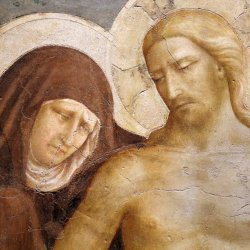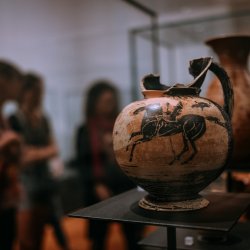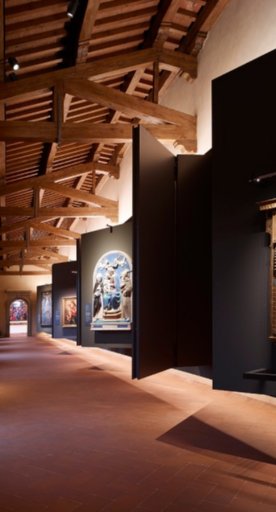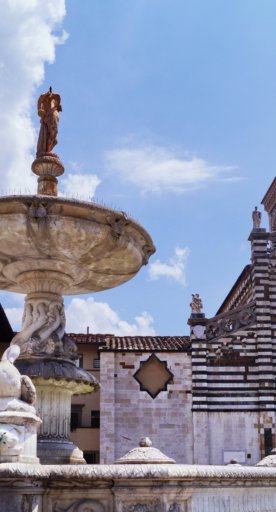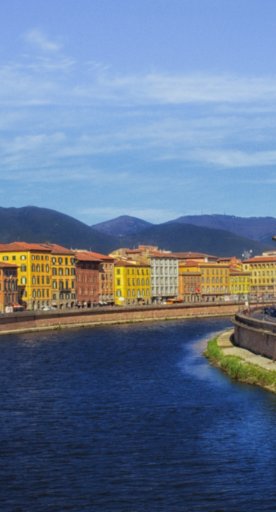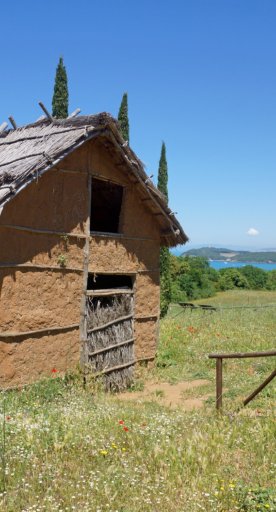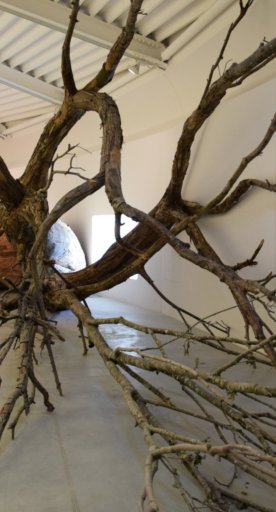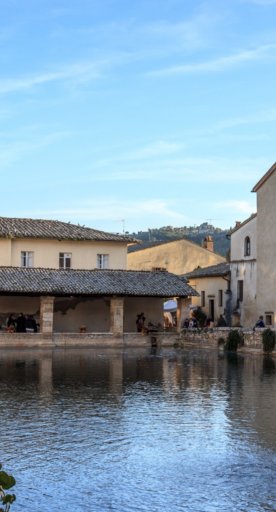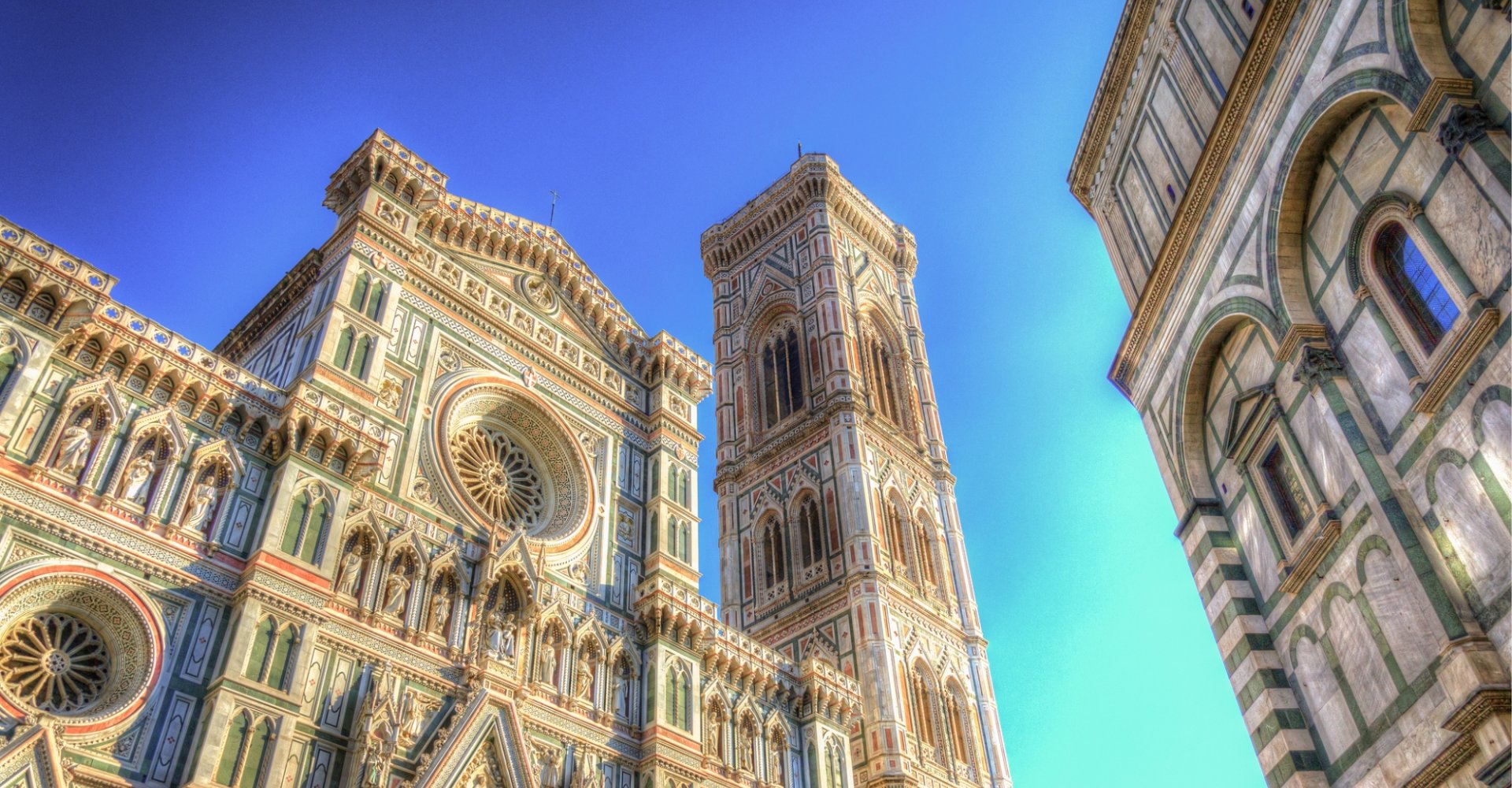

Accessible museums in Florence
Accessible museums, churches, palaces and monuments
Most of the points of interest in Florence are accessible for people with motor disabilities, other types of disabilities and fragile tourists in general.
Admission is normally free for the person with disabilities and the caregiver, with priority entry, with or without a reservation (always recommended). As each museum has its own rules, it is always advisable to contact them in advance.
In many museums it is also possible to request special visits, such as tactile or olfactory tours for the visually impaired.
-
1.Accademia Gallery
-
2.Uffizi Gallery
-
3.Opera di Santa Maria del Fiore Complex
-
4.Palazzo Pitti and Boboli Gardens
-
5.Bargello National Museum
-
6.Palazzo Vecchio
-
7.Palazzo Medici Riccardi
-
8.Opera di Santa Croce Complex
-
9.Medici Chapels
-
10.Galileo Museum
-
11.San Marco Museum
-
12.Santa Maria Novella Complex
-
13.Marino Marini Museum
-
14.Palazzo Davanzati (Museum of the Historic Florentine House)
-
15.Synagogue and Jewish Museum
-
16.Stibbert Museum
-
17.Other fully accessible museums
-
18.For information
Accademia Gallery

The Accademia Gallery is completely accessible, with lifts and stair lifts that allow visitors to reach all floors.
Uffizi Gallery

At the Door 1, in Via della Ninna, there is the access ramp for wheelchairs as well as staff to help. The second floor is accessible via lifts; at the entrance you can ask for a wheelchair of a size compatible with the elevator. There is a stair lift to reach both bar and terrace.
The Uffizi Gallery has also a special itinerary – Uffizi by Touch - to help the visually impaired to enjoy some of its masterpieces; guide dogs are allowed inside the museum.
Opera di Santa Maria del Fiore Complex
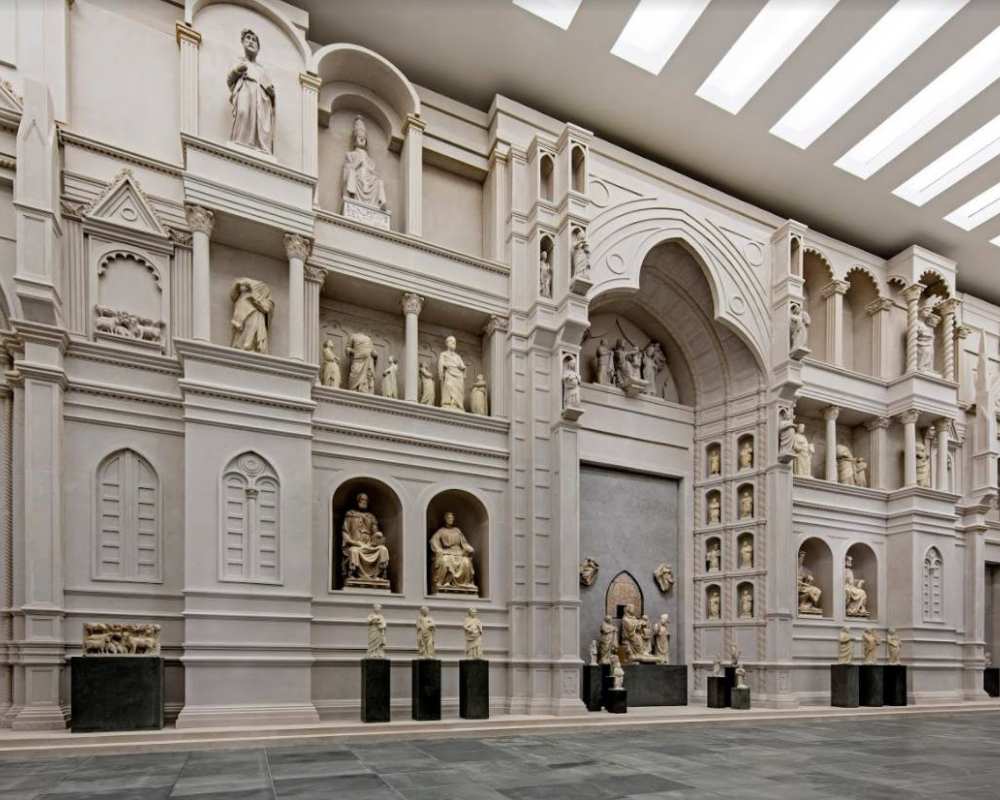
The accessible entrance to the Cathedral is on the right side. The interior is fully accessible and there is the TouchAble path, which includes a tactile model of the entire monumental complex.
Baptistery of San Giovanni
The Baptistery is fully accessible for those with motor disabilities (there is a ramp at the entrance). Inside a Touchable path is available.
Opera del Duomo Museum
The Opera del Duomo museum is fully accessible and equipped with lifts that allow access to the three floors of the exhibition and the terrace. There are paths designed for special audiences (visually impaired, people with hearing difficulties, people with Alzheimer's or other diseases).
The other monuments of the complex - Santa Reparata Crypt, Dome of Brunelleschi, Giotto’s Bell Tower - are not accessible.
Palazzo Pitti and Boboli Gardens
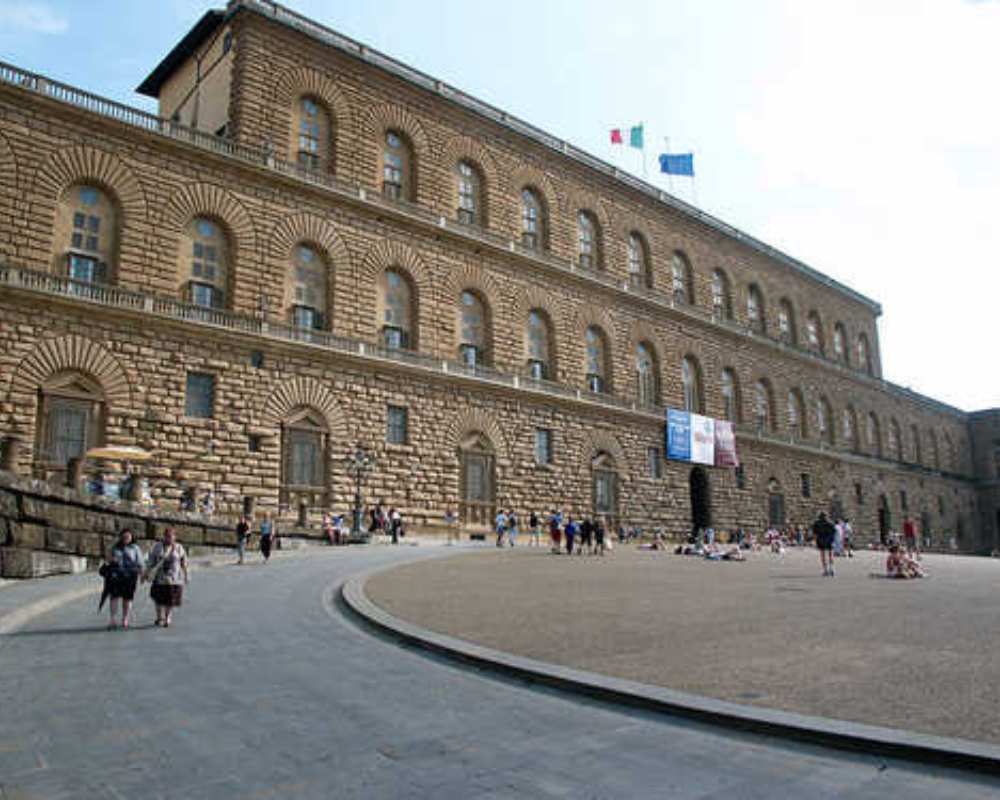
From Piazza Pitti the incline up to the entrance is very steep but completely accessible; if you have a manual wheelchair, you’ll need someone to help you. There are no steps to enter the inner courtyard of the building, where the lifts are located; there are some steps on the way to the ticket office.
The Palace is divided into four museums: the Treasury of the Grand Dukes on the ground floor, the Palatine Gallery and the Imperial and Royal Apartments on the first floor, the Gallery of Modern Art and the Museum of Costume and Fashion on the second floor.
Treasury of the Grand Dukes
It's located in the left wing of the Ammannati courtyard and is structured on two floors: the ground floor is fully accessible, while the rooms on the first floor are currently not accessible for visitors with reduced mobility or in a wheelchair.
Palatine Gallery and Imperial and Royal Apartments
Both on the 1st floor and accessible by lifts (width 90 cm.)
Gallery of Modern Art
The Gallery can be reached by lifts from the ground floor. There is a multi-sensory path, completed by audio guides, which makes a selection of masterpieces accessible to blind and visually impaired visitors.
Museum of Costume and Fashion
It is accessible with an elevator (90 cm) and a stair lift for standard wheelchairs (there is a large red button to alert the staff). A guided tour for people with visual impairments, with tactile experience on various types of fabrics, is available upon reservation.
Boboli Gardens
For visitors with motor disabilities the garden is only accessible with help, because almost all the paths are gravel and there are many inclines and slopes. The Porcelain Museum, inside the garden, is not accessible.
Bargello National Museum
The sidewalk is connected to the entrance. All the rooms of the Bargello National museum are accessible; the steps can be overcome by means of ramps (some steep, but staff is available to help) and a lift. There is a tactile path and audio guides for the visually impaired.
Palazzo Vecchio
For visitors with motor disabilities the access to Palazzo Vecchio is from the side entrance on Via dei Gondi. The two main floors of the museum are accessible, the archaeological itinerary is partially accessible, while there are some obstructions that do not allow access to the mezzanine floor, the Camminamento di Ronda and the Tower.
Palazzo Medici Riccardi
For visitors with motor disabilities the entrance to Palazzo Medici Riccardi is from Via Cavour 1, where you can contact the concierge to open the gate to the courtyard and activate the stair lift to the Marbles Museum (basement), the rooms on the first floor, the Chapel of Benozzo Gozzoli and the Salon of Luca Giordano.
The Chapel of the Magi is not accessible.
Opera di Santa Croce Complex
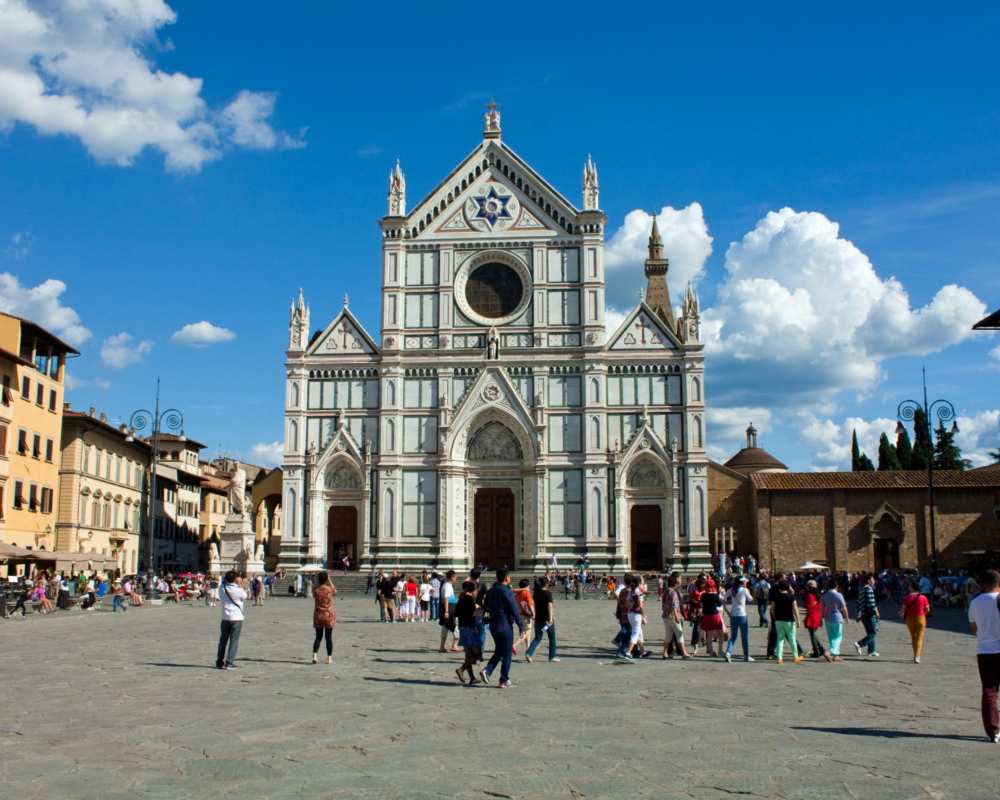
For those who use a wheelchair or have motor disabilities, the Basilica is accessible from Largo Bargellini, on the left side of the church. To visit the rest of the complex (cloister, Pazzi Chapel, museum and refectory), the entrance is from the accees door to the first cloister (on the right of the facade).
Medici Chapels
A ramp guarantees the accessibility for wheelchairs on the ground floor. The upper floor is accessed via an elevator that connects the entrance floor (Crypt) to the first floor of the Medici Chapels where are the Cappella dei Principi and the New Sacristy by Michelangelo. A platform lift allows access to the New Sacristy (activated upon request).
Galileo Museum
Visitors with motor disabilities can access from the entrance to the Lungarno Anna Maria Luisa de 'Medici n. 2, requesting the intervention of staff by intercom. Inside, the Galileo Museum is accessible in all its parts, thanks to a stairlift that also allows the transport of motorized wheelchairs. A path tactile is available for the visually impaired, by reservation.
San Marco Museum
The sidewalk leading to San Marco museum is narrow and the presence of a step requires the mobile platform that can be asked to the staff. The interior of the museum is entirely usable, thanks to the presence of ramps and elevators. The church of San Marco is not accessible.
Santa Maria Novella Complex
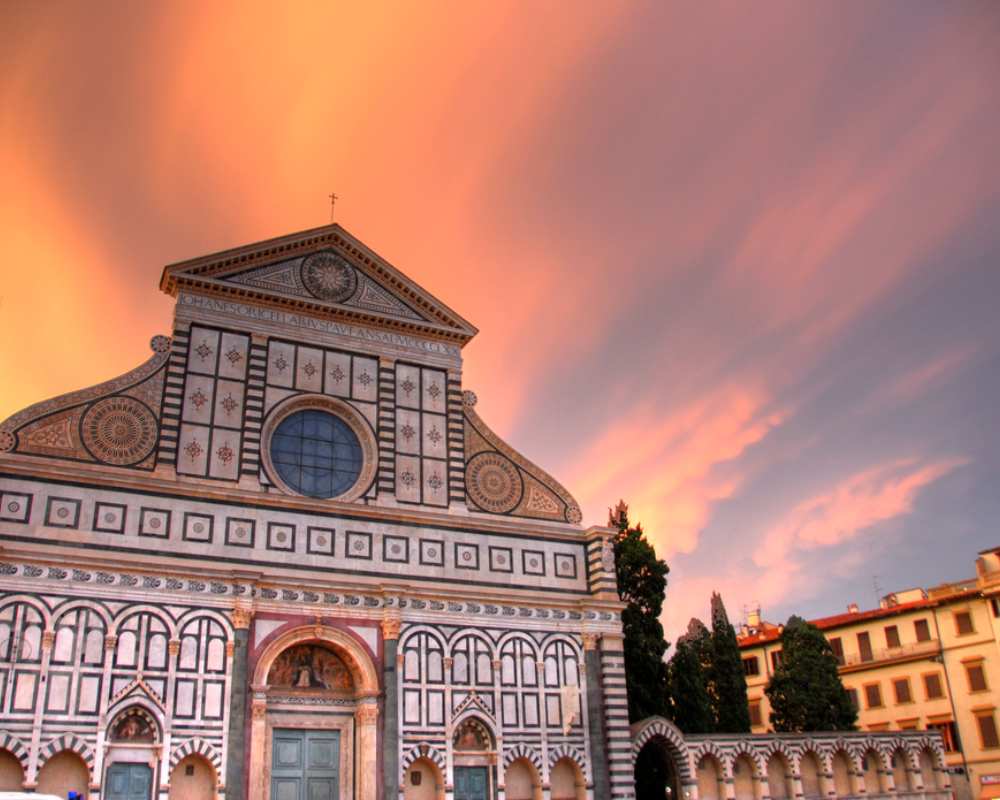
The Basilica is accessible with the exception of the Tornabuoni Chapel and the two chapels of the transept. To go from the basilica to the museum, you need to exit onto Piazza Santa Maria Novella, reach the museum exit (on the left looking at the facade) and ring the bell o have the staff open the dedicated access. The museum is fully accessible.
Marino Marini Museum

The external staircase is accessible with a tracked stairlift (a renovation is underway to facilitate entry). The interior of the Marini Museum is accessible thanks to slides and platforms.
Palazzo Davanzati (Museum of the Historic Florentine House)
The staff of Palazzo Davanzati can place a ramp at the main entrance and help with the heavy doors. A lift reaches the first floor and, upon reservation, the 2nd and 3rd. A tactile visit can be arranged for the visually impaired.
Synagogue and Jewish Museum
The Synagogue and the first floor of the museum are fully accessible to visitors with motor disabilities. The second floor is open with limited access.
Stibbert Museum
The recommended entrance to the Stibbert Museum for people with motor disabilities is from Via di Montughi 4. Some rooms on the ground floor are difficult to access due to the presence of steps; the first floor is reachable with a lift; the Japanese Armory is not accessible.
Other fully accessible museums

Dante’s House Museum
Fully accessible, except the loggia.
Museo del Novecento (Museum of the Twentieth Century)
The museum is fully accessible, with the exception of the rooms on the mezzanine level.
Opificio delle Pietre Dure Museum
The museum can be visited thanks to a series of lifting platforms.
Archaeological National Museum
The access in wheelchair is guaranteed by an electric platform, press the red button at the entrance to signal the need and wait for the caretaker.
Brancacci Chapel
The museum rooms are fully accessible, including the Chapel, which is higher than the ground level, but accessible with an elevator.
Innocenti Museum
Fully accessible.
Palazzo Strozzi
The courtyard is easily accessible, with a ramp located in via Strozzi. Elevators make the exhibition floor accessible, without barriers of any kind.
For information
For more details about these and other museums and monuments, please see the “Without barriers” section of the Official Tourism website of the Metropolitan City and of the Municipality of Florence.
The Accessible Tourism section of Visit Tuscany provides news, routes and information about accessible services around the region.

